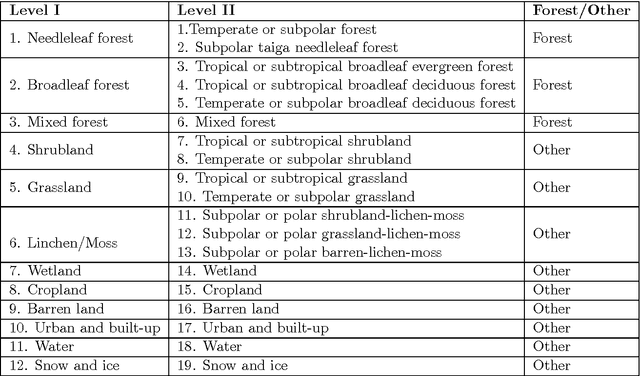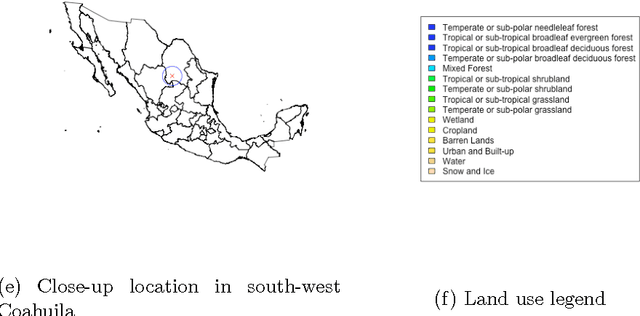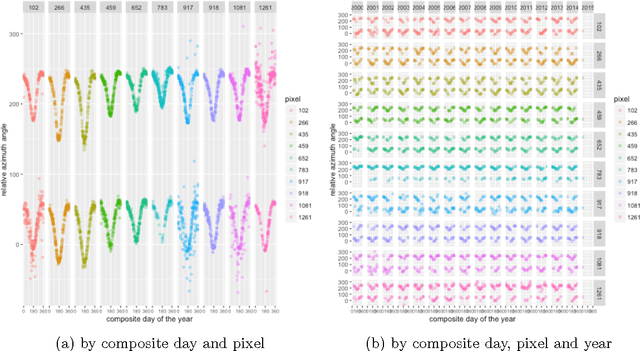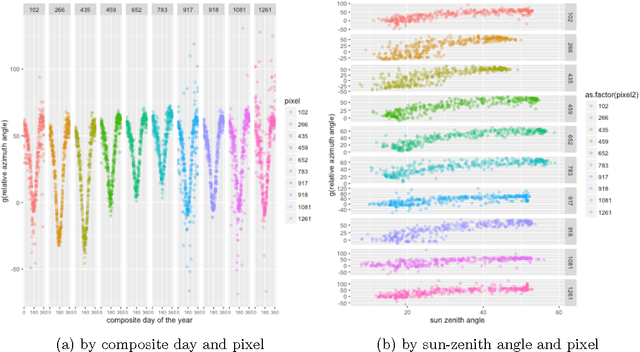Online deforestation detection
Paper and Code
Apr 03, 2017



Deforestation detection using satellite images can make an important contribution to forest management. Current approaches can be broadly divided into those that compare two images taken at similar periods of the year and those that monitor changes by using multiple images taken during the growing season. The CMFDA algorithm described in Zhu et al. (2012) is an algorithm that builds on the latter category by implementing a year-long, continuous, time-series based approach to monitoring images. This algorithm was developed for 30m resolution, 16-day frequency reflectance data from the Landsat satellite. In this work we adapt the algorithm to 1km, 16-day frequency reflectance data from the modis sensor aboard the Terra satellite. The CMFDA algorithm is composed of two submodels which are fitted on a pixel-by-pixel basis. The first estimates the amount of surface reflectance as a function of the day of the year. The second estimates the occurrence of a deforestation event by comparing the last few predicted and real reflectance values. For this comparison, the reflectance observations for six different bands are first combined into a forest index. Real and predicted values of the forest index are then compared and high absolute differences for consecutive observation dates are flagged as deforestation events. Our adapted algorithm also uses the two model framework. However, since the modis 13A2 dataset used, includes reflectance data for different spectral bands than those included in the Landsat dataset, we cannot construct the forest index. Instead we propose two contrasting approaches: a multivariate and an index approach similar to that of CMFDA.
 Add to Chrome
Add to Chrome Add to Firefox
Add to Firefox Add to Edge
Add to Edge